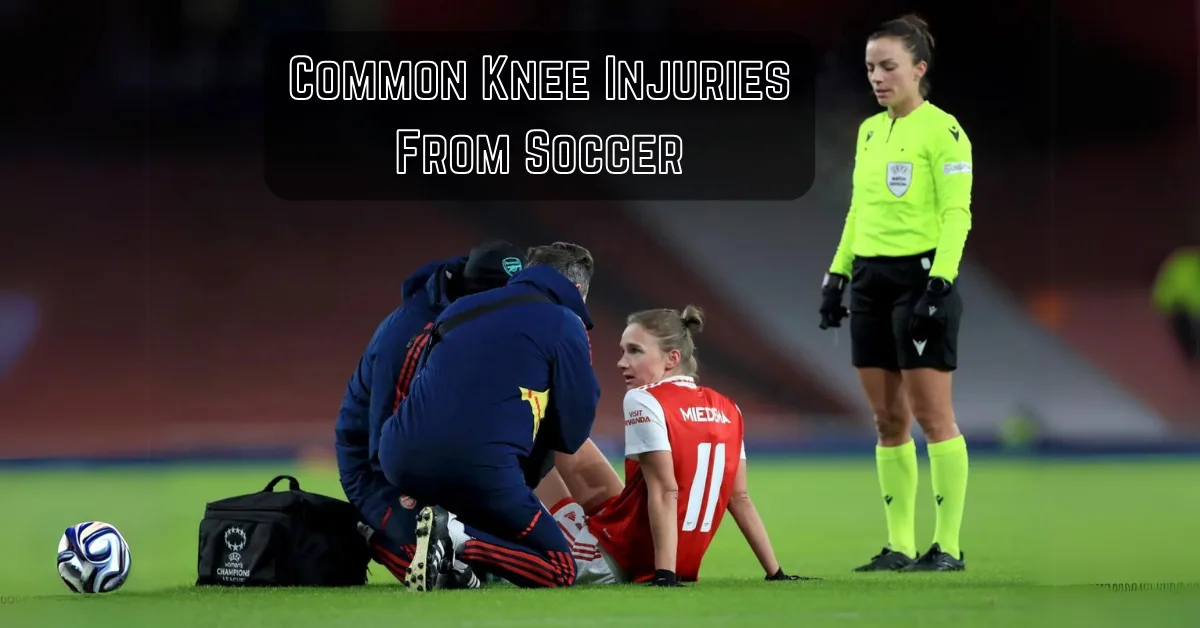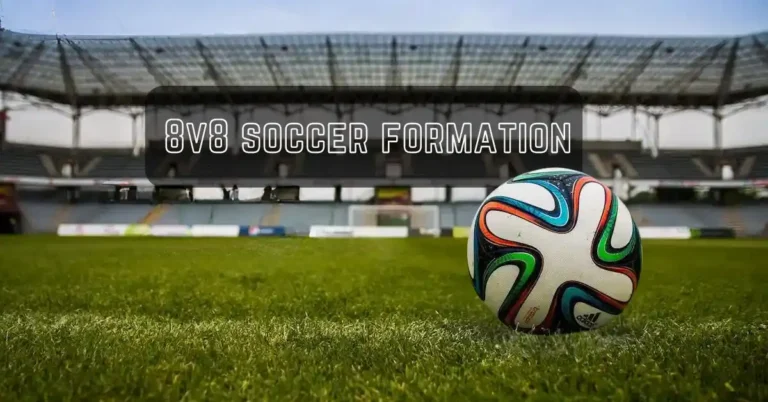Common Knee Injuries From Soccer – Symptoms And Treatments
Soccer, known for its fast-paced nature and agility requirements, exposes players to various injuries, particularly in the lower extremities. Among these, common knee injuries from soccer can significantly impact a player’s performance and overall well-being.
9 Common Knee Injuries From Soccer
ACL Injuries

The Anterior Cruciate Ligament (ACL) is a crucial ligament that stabilizes the knee joint. In soccer, ACL injuries are unfortunately common due to the sudden stops, changes in direction, and pivoting movements involved in the game.
Ligament Knee Injuries
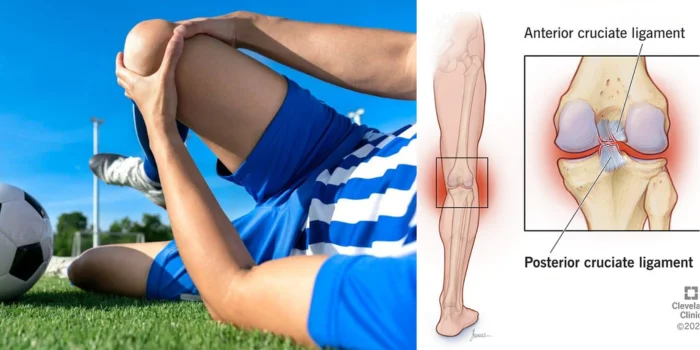
Apart from the ACL, other ligaments in the knee, such as the posterior cruciate ligament (PCL) and lateral collateral ligament (LCL), can also be injured during soccer activities. Ligament injuries can range from mild sprains to severe tears, affecting the stability and functionality of the knee joint.
MCL Tears
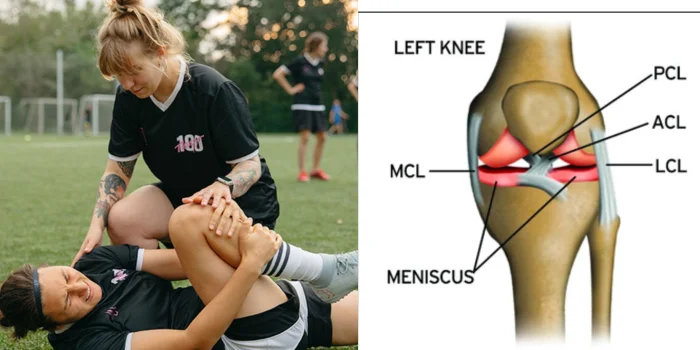
The Medial Collateral Ligament (MCL) is frequently injured in soccer, typically resulting from a direct impact on the outer part of the knee or a sudden twisting motion. MCL tears are common in soccer due to the close contact and potential for collisions during matches.
Kneecap Dislocations
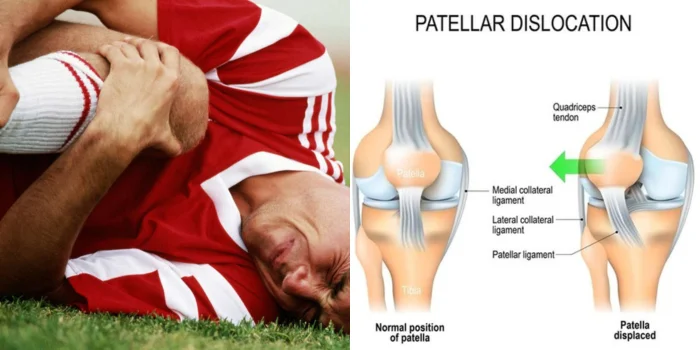
Kneecap dislocations occur when the patella (kneecap) is forced out of its normal position. Soccer players may experience this injury during awkward landings, sudden stops, or direct blows to the knee. Dislocations can result in pain, swelling, and instability in the knee joint.
See Also How To Gain Stamina For Soccer?
Patellar Tendonitis
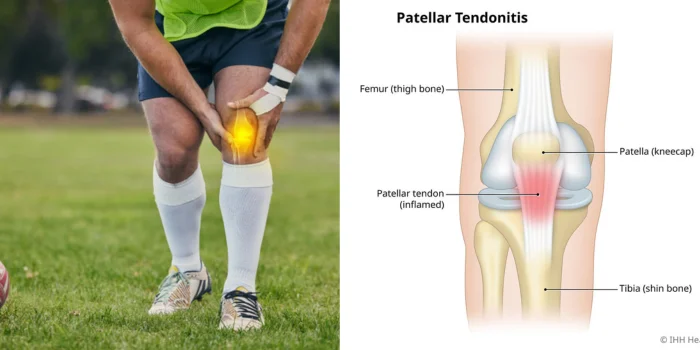
Patellar tendonitis, also known as jumper’s knee, is the inflammation of the patellar tendon that connects the kneecap (patella) to the shinbone. Overuse or repetitive stress on the knee can lead to this condition, causing pain and discomfort.
Iliotibial Band (ITB) Syndrome
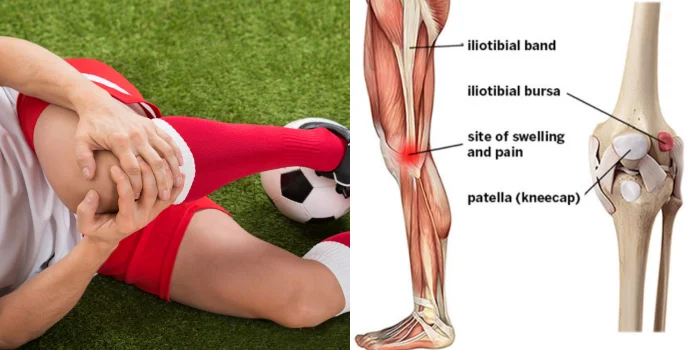
ITB syndrome is a common overuse injury in soccer players. The iliotibial band, a thick band of connective tissue running down the outside of the thigh, can become tight and inflamed, leading to pain on the outer side of the knee.
PCL Injuries (Posterior Cruciate Ligament)
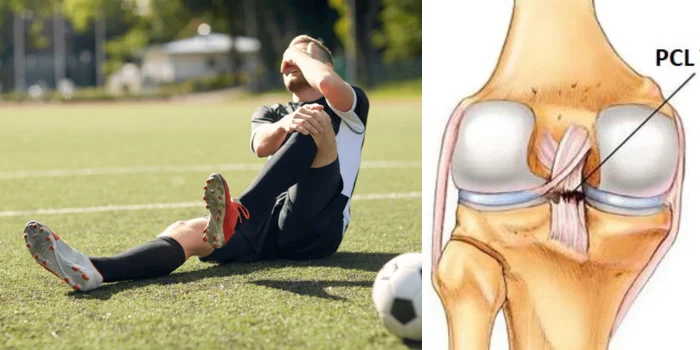
PCL injuries occur when there is a force applied to the front of the knee, often during a direct blow or a fall. This can result in damage to the posterior cruciate ligament, one of the major ligaments in the knee, leading to instability and discomfort.
Osteochondral Defects

Osteochondral defects involve damage to the cartilage and underlying bone in the knee joint. Soccer players may experience these defects due to traumatic injuries, such as a direct impact on the knee or repetitive stress, leading to pain, swelling, and difficulty moving the joint.
Meniscus Tears
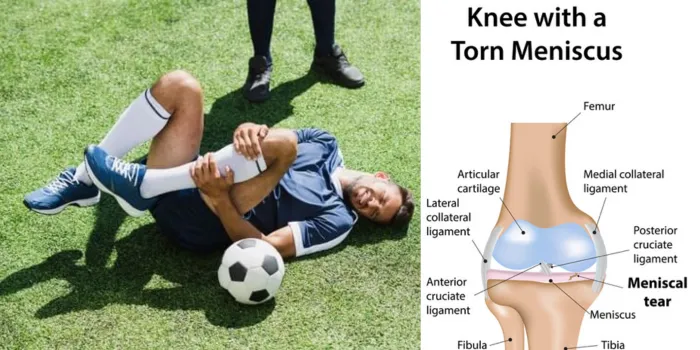
The meniscus, a cartilage structure in the knee, can be torn when the knee undergoes a forceful twisting motion. Soccer players are prone to meniscus tears, especially during abrupt changes in direction or sudden stops, causing the meniscus to bear excessive stress.
See Also Junior Soccer Field Dimensions
Symptoms of Common knee Injuries from soccer
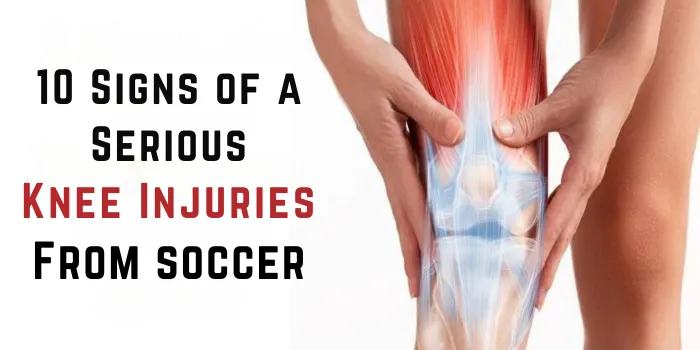
10 common symptoms of knee injuries often associated with soccer:
- Pain: Persistent or acute pain in the knee, especially during movement or weight-bearing activities.
- Swelling: Noticeable swelling around the knee joint, indicating inflammation.
- Bruising: Discoloration or bruising around the knee, suggesting damage to blood vessels.
- Stiffness: Difficulty in fully bending or straightening the knee due to tightness or reduced range of motion.
- Instability: Feeling of instability or a sense that the knee may give way, indicating potential ligament damage.
- Popping or Clicking: Audible or palpable sounds during movement, which may suggest issues with the ligaments or menisci.
- Limited Weight Bearing: Reluctance or inability to put weight on the affected leg when standing or walking.
- Tenderness to Touch: Increased sensitivity or tenderness around the knee when touched, pointing to localized pain.
- Difficulty Kneeling or Squatting: Challenges in performing activities that involve bending the knee, such as kneeling or squatting.
- Reduction in Performance: Decreased athletic performance or difficulty in executing soccer-related movements due to pain or limitations in knee function.
See Also At What Age Do Soccer Players Retire?
Treatments for knee Injuries

- Rest: Allow the injured knee to rest and avoid putting weight on it to promote healing.
- Ice: Apply ice packs to reduce swelling and alleviate pain. This can be done several times a day for 15-20 minutes each session.
- Compression: Use compression bandages or braces to provide support and minimize swelling.
- Elevation: Elevate the injured leg to reduce swelling by keeping it elevated above the level of the heart when possible.
- Pain Management: Over-the-counter pain relievers, such as acetaminophen or nonsteroidal anti-inflammatory drugs (NSAIDs), may be recommended for pain control.
- Physical Therapy: Engage in targeted exercises and rehabilitation under the guidance of a physical therapist to strengthen the knee, improve the range of motion, and promote recovery.
- Bracing: Depending on the severity of the injury, a knee brace may be prescribed to provide additional support during the healing process.
- Anti-Inflammatory Medications: In some cases, a healthcare professional may recommend prescription medications to reduce inflammation and pain.
- RICE Protocol: Follow the RICE protocol – Rest, Ice, Compression, and Elevation – in the initial stages of injury to manage symptoms effectively.
- Surgery: In more severe cases, particularly with ligament tears (such as ACL tears), surgical intervention may be necessary to repair or reconstruct the damaged structures.
how to Prevent Knee Injuries in Soccer?
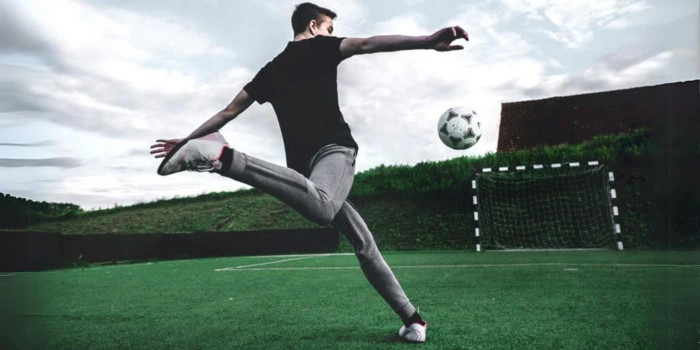
Preventing knee injuries in soccer involves a comprehensive approach that addresses various aspects of players’ physical conditioning, technique, and awareness. Here are key strategies to minimize the risk of knee injuries in soccer:
- Warm-Up: Begin with dynamic stretches and exercises to prepare muscles and joints.
- Strength Training: Focus on building quadriceps, hamstrings, and core strength for joint stability.
- Footwear: Ensure players wear appropriate footwear with good traction on the playing surface.
- Conditioning Programs: Include cardiovascular exercises, strength training, and agility drills in training programs.
- Injury Awareness: Educate players and staff on common knee injuries and preventive measures.
- Health Check-ups: Encourage regular check-ups to address underlying health issues.
- Pitch Inspection: Maintain safe playing surfaces through regular inspection for irregularities.
Why ACL Injuries Are Common in Soccer?

ACL (Anterior Cruciate Ligament) injuries are frequent in soccer due to the sport’s dynamic and high-impact nature. The rapid stops, pivoting movements, and sudden changes in direction place immense stress on the ACL, making it susceptible to strains and tears.
Additionally, the jumping, landing, and collisions inherent in soccer contribute to the increased risk of ACL injuries. The inconsistent playing surfaces, ranging from uneven fields to slippery conditions, further amplify the potential for accidents.
Notably, female soccer players have a higher predisposition to ACL injuries, attributed to hormonal, biomechanical, and muscle imbalance factors.
FAQs
The three most common injuries in soccer are sprains and strains, contusions (bruises), and fractures.
The most common knee injury in footballers is the Anterior Cruciate Ligament (ACL) injury.
The worst knee injuries in soccer often involve severe ligament tears, such as complete ACL tears, PCL (Posterior Cruciate Ligament) tears, and complex meniscus injuries.
Soccer can potentially lead to knee injuries due to the sport’s dynamic and high-impact nature. However, preventive measures, proper conditioning, and adherence to correct techniques can significantly reduce the risk of knee damage.
Conclusion
While knee injuries are common in soccer, players can take proactive measures to reduce the risk and enhance recovery. By understanding the types of injuries, adopting preventive strategies, and seeking timely medical intervention, soccer enthusiasts can continue to enjoy the game while safeguarding their knee health.

